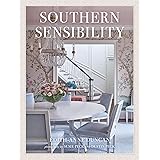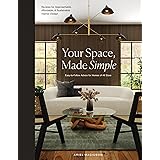Architect’s Guide to Avoiding Common Living Room Design Mistakes
Every home has unique requirements. Each room presents its own challenges. Furnishing a living area can often feel like a puzzle. As an architect with a decade of experience, I have navigated many design hurdles. This post expands on critical living room design mistakes. It offers practical ways to fix them. You can create a beautiful, functional space.
Embrace Slow Design for Your Living Room
Moving into a new place is exciting. It is tempting to furnish quickly. No one wants an empty room. Rushing purchases often leads to regret. Planning ahead is very wise. Do your due diligence. Do not get too attached to specific items. A nice space requires proper planning.
Traditional methods like CAD knowledge are useful. Yet, they are not foolproof. Even experienced designers make errors. I have brought home chairs that were too big. They looked awkward in the space. This is where “slow design” helps. It is a powerful alternative. This approach suggests understanding your new space first. You learn how you inhabit it. Then, you invest in new pieces. Using existing versatile furniture saves money. It makes the space come together easily.
Slow design prioritizes testing. Use items you already own. If furniture is scarce, use imagination. Find desired items online. Test their feel in your real space. Painter’s tape is an excellent tool. Mark the exact dimensions of furniture. This gives a true sense of scale. It shows how pieces occupy the room. This strategy prevents buyer’s remorse. You establish what you want clearly. Buy only after careful consideration.
Overcoming Design Myopia: See the Whole Picture
Starting with a blank canvas is thrilling. This is true for any new space. We often browse endlessly online. We visit countless showrooms. It is easy to fall in love. A “dream furniture item” becomes an obsession. This can be a guiding “North Star.” It helps define your style. It impacts your layout choices. It informs other furniture pairings.
Showrooms present furniture at its best. They are professionally curated. Everything looks perfect there. Items can look different at home. This can be confusing. The furniture itself may be good. You may have measured meticulously. You might have read hours of reviews. You may have checked construction quality. The real issue is often context. Furniture is rarely enjoyed in isolation. We forget about other essential items. Lighting, tables, rugs, lounge chairs all matter. This oversight is “myopia.” It means nearsightedness or narrow-mindedness. We can lose sight of the forest for the trees. This stops us from seeing the living area as a whole.
This mistake is incredibly common. Sometimes a great deal appears online. A free sofa might be offered. It is hard to say no. A large furniture item bought this way handicaps a room. It forces other items into an afterthought role. This is usually painfully obvious. To avoid this, create a budget. Spread it evenly across your living area. This reframes value. It helps you consider every element.
Optimizing Living Room Layouts and Focal Points
Most living rooms have one window. They also have at least one entryway. Remaining wall space has many uses. You can create an open-plan layout. New doorways can connect rooms. Wall storage holds art and books. Many people dedicate one wall to a feature. A fireplace or TV is common. This gives the room purpose. It dictates the layout direction. Too much happening limits layout options.
For example, a TV wall might be fixed. Avoiding window views with a sofa is key. This might force the sofa placement. It could end up in the middle of the room. This is uncomfortable. Movement and energy behind your head disrupt relaxation. Large windows or open-plan layouts are not mistakes. But, if other things occupy remaining wall space, layout is affected. Many overlook this when knocking down walls. In small living room layouts, this is a struggle.
A blackout blind can serve as a projector screen. It makes the window a focal point. Curtains can act as movable partitions. They add a sense of enclosure. Sometimes, you simply cannot have everything. Open-plan layouts offer many pros. These often outweigh the cons. Balance openness with defined zones.
Choosing the Right Rug: Size, Material, and Pattern
Most homes without carpet consider rugs. A rug is a large, loose piece of carpet. It is usually rectangular. It remains unfixed to the floor. Choices are nearly unlimited. Material, size, shape, and color vary widely. A rug adds warmth and softness. It is more comfortable underfoot. It absorbs acoustic reverberations. Hard surfaces make rooms feel hollow. This impacts TV watching or conversation. Aesthetically, rugs ground furniture. They stop pieces from looking like they float. Furniture placed on a rug looks anchored.
Rugs can be expensive. People often buy rugs that are too small. This is a common pitfall. It is almost impossible to fit all furniture feet. Aesthetically, it solves nothing. It makes the rug look dinky. Certain rug materials shed. Lint and hair get everywhere for a year. Pale rugs are vulnerable to stains. This is a huge problem if unwashable. Some materials deform with water. Certain color and material combinations are flawed. Always buy the correct size. Proportions are incredibly important. Choose a textured or patterned rug. They are much more forgiving with stains.
Intentional Lighting Beyond the Basics
Windows provide natural light. This fades as night falls. Most living rooms have basic lighting. Spotlights, ceiling lights, or pendants are common. They connect to a single switch. These fixtures are efficient. They are unobtrusive. They save space and cost. They fulfill the basic need to see in the dark. However, ceiling lights can feel harsh. They stop a space from feeling cozy. They do not flatter anyone or anything. This makes you want to spend less time there.
Today, efficiency is less critical. LEDs changed the game. They offer a 75% energy cost reduction. Their lifespan is 25% longer than incandescent lights. Combine LEDs with smart lighting. You get more interesting light sources. Place them strategically around the room. Connect them with one switch. No more independent turning on. Smart lighting often allows dimming. You can change color temperature. This is a huge benefit. It makes lighting more intentional. It creates a cozier atmosphere.
Controlling Natural Light Thoughtfully
Natural light is invaluable. It boosts mood. It makes spaces feel larger. Maximizing it is always good. This is crucial if you work from home. Yet, natural light needs control. West-facing windows create a sauna effect. Neighboring views compromise privacy. Net curtains are an old home staple. They provide daytime privacy. They temper harsh daylight. But they look incredibly dated. They hang to exact window dimensions. This makes windows appear small. Sheer curtains offer a better alternative. Some homes add awnings for shade. These combine to make rooms dark. Awnings allow open windows in rain. For small windows, they make little sense. Summer cooling benefits are minimal. Year-round natural light is compromised.
Cellular blinds are a better choice. Venetian blinds also work well. Daylight blinds maximize natural light. They preserve outside views. They provide shade and privacy. They are perfect for living areas. These do not require a blackout solution. They balance light and privacy effectively.
Smart Storage and Avoiding Clutter Magnets
Shelves are excellent for display. Books, lamps, ceramics, and plants elevate a home. They convey nuanced character. This beats simple hanging art. Shelves utilize walls and room height. This is both a blessing and a curse. Open surfaces attract dust. Many separate items live on shelves. Cleaning around them is frustrating. Their open nature attracts clutter. Any open surface becomes a “place to put things.” This is true for many households.
If storage is short and clutter is high, enclosed storage is a must. Sideboards and consoles hide clutter gracefully. Cabinets offer tasteful concealment. Under-seat storage is highly efficient. Think sofas, benches, and ottomans. These solutions keep your living room neat. They maintain a tidy and inviting feel.
Balancing Comfort with Versatility in Furniture
Kicking back in a comfortable sofa is satisfying. Living rooms are primarily for relaxation. Comfortable seating is paramount. Recreating a cinema experience at home is ideal. Comfortable furniture allows you to put your feet up. But prioritizing comfort too much can sacrifice versatility. Extra comfy furniture like recliners needs space. They require room to function properly. This often sacrifices circulation space. Bulky arms make navigation difficult. Side tables might be lost. Reaching for a coffee table becomes the norm.
Side tables temper furniture proportions. Coffee tables take up much space. They are not always 100% necessary. They can be hazardous for kids and pets. They limit using the living room for exercise or play. This is crucial in smaller spaces. Prioritize versatility and usability. Avoid cramming too much functionality. Ottomans offer a footrest alternative. They are lightweight and movable. They are also multi-functional. Nesting or handled side tables replace coffee tables. They provide a handy surface. They move out of the way easily. Modular sofas and lightweight armchairs follow this principle. Consider versatility while retaining comfort. This keeps your home adaptable to change. It saves space and money in the long run. Thoughtful choices enhance your living room.
Adding Texture and Warmth: Beyond Sterile Spaces
Hard, resilient surfaces keep homes clean. High-pressure laminate is affordable. It is a durable furniture and flooring solution. It is also easy to clean. Metal and plastic work well for chairs. These materials are affordable and durable. However, they often lack texture and character. This can make a home feel sterile. They are not very sound absorbent. Too many hard surfaces create reverb. Your living room can feel hollow. These materials serve a functional purpose. But they can make a space unwelcoming. It becomes uncomfortable to spend time in. This is the opposite of a cozy living area.
Cleanliness and affordability are high priorities. Yet, you do not want a hospital-like space. Choose materials with visual texture. Ensure enough soft furnishings. These absorb reverb. They also add visual texture. Rugs and cushions are easy fixes. They make a space more welcoming. Warm, non-reflective natural materials help. Wood and plants prevent a lifeless feel. These elements create a balanced, inviting atmosphere. They ensure your living room design truly feels like home.











